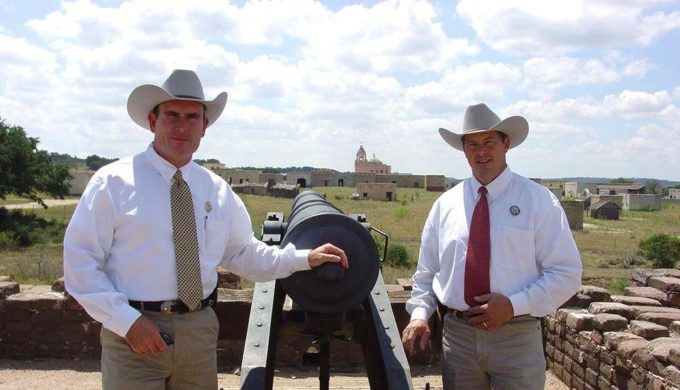Through the mid-1930s, the Texas Rangers operated in their post – Allred, restructured fashion, apprehensive about their future due to leadership changes in the DPS. However, in late 1938, following the appointment of Colonel Homer Garrison, Jr. as their director, the Texas Rangers once again regained high status. Over the next three decades under his guidance, the rangers were the detectives of the DPS which the Highway Patrol officers were the uniformed state police. The rangers expanded to six companies, with an overall complement of 45 men in 1941, 51 in 1947, and 62 in 1961. The majority of their officers were stationed individually in small Texas towns, but the governor had the ability to assign them to any case throughout the state. They were skilled in the use of modern scientific review performed by the Headquarters Division and during Garrison’s direction, they operated at peak performance. They investigated over 8,000 cases annually during the 1950s, which only increased in the 1960s with the civil-rights movement and the growing Texas population.
History
History of the Texas Rangers Part IV: A Force to be Reckoned With

Photo: Facebook/The Texas Rangers
Upon Garrison’s death in 1968, the DPS leadership reorganized and redefined Texas Ranger guidelines, and under his successor (Colonel Wilson E. Speir), they grew to 73 men in 1969 and 94 men by 1975. They were also highly trained and better equipped. Recruiting now began at 30 and ended at 50 years of age, and they had to have a minimum of eight years of on-the-job police experience as well as an intermediate certificate identifying 400-600 hours of classroom study. The DPS outfitted the Rangers with high-powered cars equipped with the latest radios and a large variety of the latest weapons and armor, and the state began paying increased salaries and adding benefits. The result was an elite Texas law enforcement unit. Force improvement continued, training was intensified, and their crime-detection equipment and weaponry became much more sophisticated. Despite growing caseloads, the applicant list to become a Texas Ranger continued to increase. In recognition of their effectiveness against the criminal element, as well as their state law enforcement dedication, the legislature increased their overall complement to 105 officers (also including women) in 1996 and, further to that, increased the salaries and benefits components to mirror the times and job requirements.

Photo: Wikipedia
Today, their organization continues to maintain the basic outlines that were set after Allred’s political platform for better law enforcement in 1935. Their agency is separated into seven companies: six District Companies which are lettered “A” through “F”, and Headquarters Company “H.” The Texas Legislature still sets their number of personnel, and as of 2014, the Texas Rangers included 150 officers, a forensic artist, a fiscal analyst, and 24 support personnel. There is also the provision for the temporary commissioning of up to 300 Special Rangers for assistance in investigative or emergency situations, and they’re headquartered in Austin at the Texas DPS headquarters. District offices “A” through “F” are located in Houston, Garland, Lubbock, Weslaco, El Paso, and Waco, respectively. The Texas Rangers Hall of Fame and Museum opened in Waco in 1968 and visitors can tour their official memorabilia, artifacts, and learn about past law enforcement officers as well as present serving members. Going on 182 years of law enforcement service to Texas in one fashion or another, the Texas Rangers are a force to be reckoned with.
Want more Texas Ranger history? Read Part I, Part II, and Part III of this series.
Sources:



